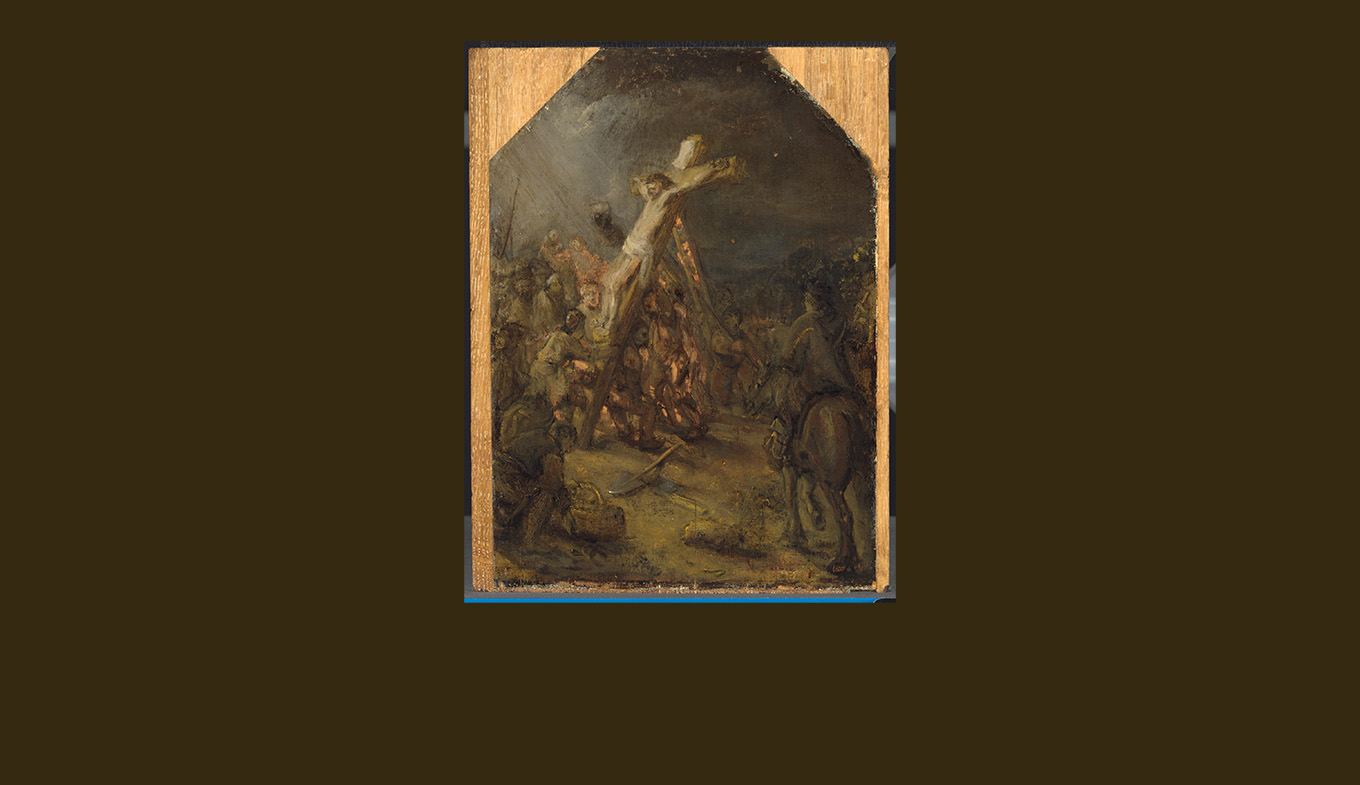
Oil sketch attributed to Rembrandt - Nov. 3, 2022
Alte Pinakothek, Munich
Art historians áfter Mr. Bredius were convinced that the 38.0 x 27.8 cm panel must be by a follower. After the oil sketch had been cleaned, it was brought to the Rijksmuseum in Amsterdam to be examined. Their results confirm Dr. Giltaij’s discovery: the oil sketch can be attributed to the hand of the great master. With the oil sketch, Rembrandt harks back to a painting of the same title that he painted some 10 years earlier, a larger version of The Raising of the Cross from around 1633, now in collection of the Alte Pinakothek in Munich.
Not a copy

The sketch in Museum Bredius differs significantly from the painting in Munich. These differences prove that the sketch is not a copy. After all, a copyist does not change anything, but paints a copy of an original as precisely as possible. Despite the differences, there is indeed a connection between the oil sketch in Museum Bredius and the painting in Munich. The composition of the oil sketch shows great artistic talent.
Later additions
Over a 100 year old overpainting and layers of varnish on the oil sketch made it difficult to properly assess Rembrandt's 'hand'. It was therefore decided to strip the painting of all later additions so that we could study the original 17th-century paint. Private paintings conservator Johanneke Verhavetook on this task. In a presentation Museum Brediusnow shows the painting in its 'stripped state’, that is to say without any new retouchings. This means that every visible brushstroke and touch of paint was applied by Rembrandt, but at the same time, some damages in the paint layers are clearly visible.
Scientific research
The presentation at Museum Bredius also features the results of Infrared Reflectography (IRR) and X-ray Photography. The Rijksmuseum in Amsterdam has also performed a Macro-X-ray Fluorescence Scan (Macro XRF). The data obtained from this study are currently being analyzed. Regarding the use of materials, the researchers of the Rijksmuseum did not find anything to contradict an attribution to Rembrandt. Marta Dominguez-Delmás, guest dendrochronology researcher at the Rijksmuseum, was able to determine with her research that the panel dates from 1634 and could have been used by the painter between 1642 and 1645.
Creative process
The research shows that the sketch has several 'pentiments' (improvements made by the artist himself while painting). This means that the making of the composition of The Raising of the Cross was a creative process. These findings rule out the possibility that the oil sketch is a copy from Rembrandt's time after another painting. Interestingly, Rembrandt also reused an element from his own work in the sketch for the rider on horseback on the right. In fact, almost the same horseman appears in an etching by Rembrandt, which is dated around 1629.
The 'hand' of Rembrandt
Every painter has his own 'hand', his own style of painting. Rembrandt has a very specific brush handling. He is a master at rendering dramatic light and dark effects. He does this in his own magisterial way with just a few brushstrokes. This is illustrated in the presentation through several details from the oil sketch.
Presentation Rembrandt discovered in Museum Bredius
From November 3rd, Museum Bredius will devote a presentation to the oil sketch of The Raising of the Cross and the research carried out on it by the Rijksmuseum and private paintings conservator Johanneke Verhave. Rembrandt's panel is on display at the presentation. 'Rembrandt discovered in Museum Bredius' - 3 November 2022 - 15 January 2023